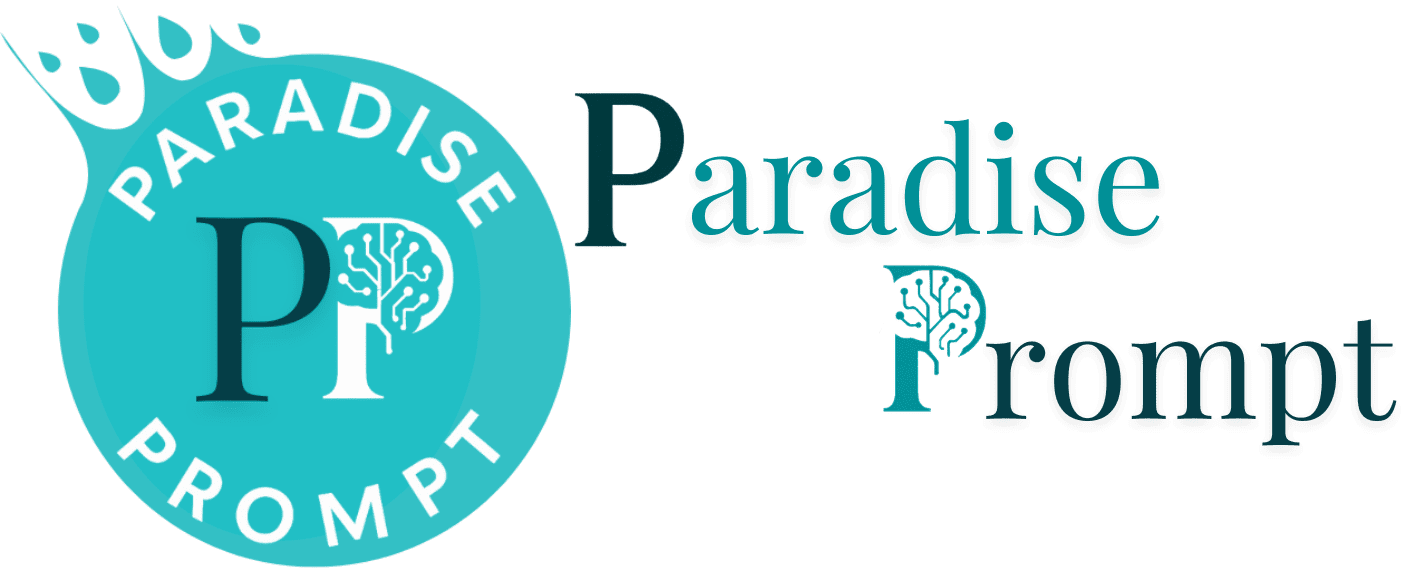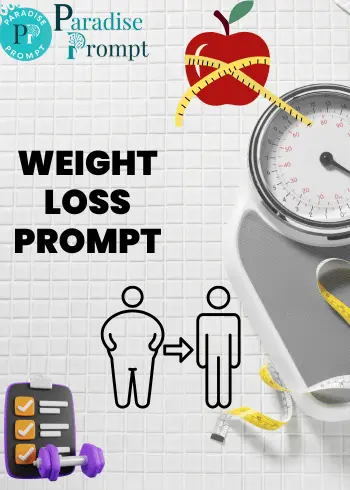What Is Prompt Writing?
1-1. Definition and Evolution
Prompt writing involves crafting linguistic, visual, or multimedia cues that guide artificial intelligence models in their decision-making processes. It influences the tone, length, structure, and content of what is produced. Prompt writing today has developed in tandem with Natural Language Processing (NLP), striving to capture the subtlety and intention that characterize human communication. The evolution of deep learning, particularly with transformer models such as BERT, GPT-3/4, Gemini, and Claude, has played a crucial role in this shift.
1-2. Role in AI Systems
Writing prompts are a crucial skill in AI systems, enabling artificial intelligence to steer toward possible responses. It acts as a bridge between what people want and what machines can do, understanding knowledge about the world, handling uncertainty, and focusing on what matters most. Around 72% of professionals surveyed are using generative AI, making prompt writing an essential skill in today’s digital landscape.
1-3. Types of Prompts
Not all prompts are made the same. In AI systems, the spectrum includes:
- Text Prompts: You can provide input through questions, commands, or descriptions, like asking, “Can you summarize this article in 100 words?”
- Photo Prompts: Visual instructions (for example, providing an image to an AI with a request like, “Please enhance the contrast and make the sky a vivid blue”).
- Video Prompts: Merging text and visual hints (“Transform the footage to evoke a cinematic and grand atmosphere, and slow down the concluding scene”).
- System Prompts: Guidelines that shape how AI operates on a broader scale (“You are a supportive assistant focused on providing healthcare advice”).
- SEO Article Prompts: Suggestions that guide AI to create content optimized for search engines, frequently incorporating particular keywords.
- Creative Writing Prompts: Inviting cues meant to ignite your imagination for storytelling, poetry, or artistic expression.
Every form comes with its unique traits, necessary frameworks, and practical strategies—elements we’ll explore together in this guide.
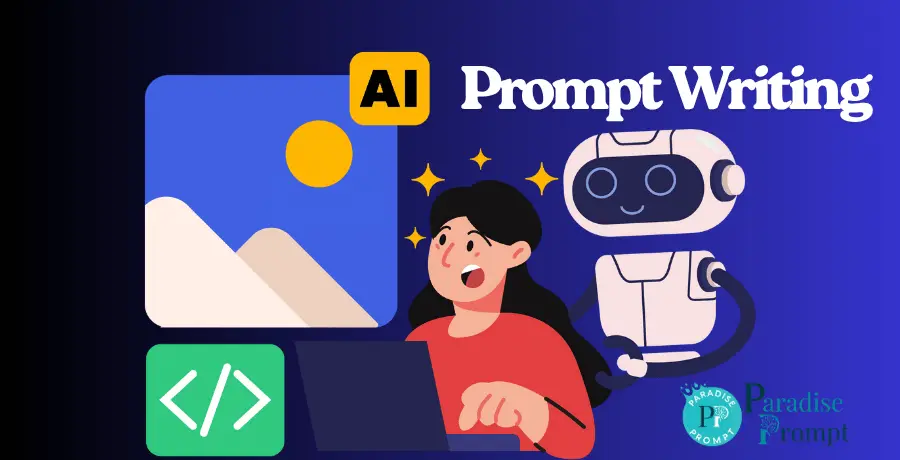 The Science Behind Effective AI Prompts
The Science Behind Effective AI Prompts
2-1. How AI Interprets Prompts
AI models utilize statistical methods that have been trained on various data sources to comprehend prompts. They examine what the user types in, compare it to training data, and predict the most likely token sequence. It’s easy to get the model’s internal compass to point in the right direction with clear prompts, but vague ones leave it unclear. Researchers at OpenAI suggest that prompts that are neither too specific nor too open-ended are most effective.
2-2. Model Training and Response Mechanisms
AI language models like GPT-4, Claude, and Gemini learn from massive datasets, either with or without human assistance. They figure out language patterns, relationships, and context by guessing what the next word will be. However, they can only respond to certain things due to their “knowledge cutoff,” and their responses differ depending on the format, such as direct questions or open commands.
2-3. Common Pitfalls
Even experienced users make mistakes with prompts, like:
- Prompts that are too broad, like “Tell me something interesting,” can lead to outputs that aren’t very deep or useful.
- Limits that aren’t clear: Not saying how long, what style, or what format you want (“Summarize the news” vs. “Write a 200-word summary focused on medical advancements”).
- Requests that are stacked: Multi-part prompts often cause parts to be skipped or ignored (“Write a poem, analyze its meaning, and translate it”—the model might skip a step).
- Bias reinforcement: If you’re not careful, prompts can pick up or make model biases worse, especially on sensitive topics.
To navigate these waters, you must learn by trying things out, examining what went wrong, and doing it again like a scientist. This is a common theme in the real-world case studies that follow.
Anatomy of a Well-Crafted AI Prompt
3-1. The 4 Parts of an AI Prompt
A strong AI prompt, like a universal adapter, makes it easy for machines to understand what people want. According to Google DeepMind (2023), experts mostly agree on four key parts:
- Instruction/Command: What do you want the AI to do? Be clear.
- Context: What background or references will help (for example, the topic, the target audience, or things that have been talked about before)?
- Input Data: Are you giving the AI something to work with, like a paragraph to summarize or an image to describe?
- Format and limits: number of words, tone, style, list vs. paragraph, citation rules, and so on.
For instance, “Summarize the following research paper [instruction], focusing on the methodology and findings for an audience of medical students [context], using this text: [input data], in under 200 words and bullet points [format].”
This scaffolding clarifies things for the AI, making the results easier to understand and utilize.
3-2. Context and Constraints
Context isn’t just for show; it’s like a GPS for AI. Models work without real-life experience, so it’s essential to set the scene (audience, purpose, style). If you told a stand-up comedian to perform for kindergarteners, their act would change completely because of the setting! The same is true for AI: the tone, language, and relevance of the output depend on the audience, the point of view, and even cultural cues.
Constraints make performance even better. Key research indicates that controlling for input-output parameters (for example, “Write in 120 words, use a formal tone, start with a quote”) enhances the quality of the work, reduces misunderstandings, and encourages creativity within established limits (Wang et al., 2023).
3-3. Balancing Detail and Brevity
This is a paradox: More isn’t always better. Providing an AI with too much information in a prompt can make it difficult for the AI to respond, resulting in stiff or brief answers. If you don’t use enough, your text will be dull and generic. The sweet spot? There is sufficient structure to ensure the model meets its goals, but there is also enough room for new ideas to emerge. Think of this as a dance: your prompt leads, but the AI sometimes makes things up as it goes along. Mastering prompt writing means learning how to balance these things, which helps with everything from creative writing prompts to technical SEO article prompts.
Fundamentals of Prompt Engineering
4-1. Principles of Prompt Engineering
Prompt Engineering is a new term that refers to the systematic and iterative process of designing, testing, and refining prompts to achieve optimal performance from AI. You could say it’s a mix of software engineering, linguistics, and solving puzzles. The main ideas are:
- Clarity: Being clear about what you want makes things less confusing.
- Testability: Running more than one version of a prompt and looking at the results.
- Modularity: Dividing complex tasks into smaller, more manageable ones.
- Iterativity: Making changes to results based on feedback.
4-2. Strategies for Different AI Models
Different AI models employ various methods to accomplish their tasks. OpenAI’s GPT-4 performs well with structured commands, but it can become confused when presented with inputs that are too abstract. Claude from Anthropic is skilled in philosophical reasoning, but he is also somewhat conservative. Gemini from Google is great at role prompts. To achieve optimal performance, familiarize yourself with the model’s quirks and adjust the prompts as necessary. Few-shot prompting and other techniques can have a significant effect on performance, depending on the end goals.
4-3. Real-World Applications
Prompt engineering is utilized in various fields, including healthcare, marketing, programming, and the creative arts. AI prompts help sort through patient complaints, make personalized care plans, and improve SEO. Developers use code prompts to write small pieces of code, explain things, and fix bugs. Mastering each use case ensures that you will be able to apply your skills in various areas, including customer service, marketing, programming, and the creative arts.
Writing Prompts for Different Modalities
5-1. Text Prompts
Text prompts remain the most crucial aspect of prompt writing, and they are essential for chatbots, creative writing, SEO, and text analytics. Text prompts are handy because they can be used in many ways. A well-written text prompt might say who the audience is (“Write for high school students”), what the tone should be (“Make it funny!”), and even how the answer should be structured (“Present your answer as a list of three quick tips followed by a summary paragraph”).
To do well, try:
- Getting the AI to “think step by step” to get complicated answers (chain-of-thought prompting).
- Giving direct orders like “Summarize,” “Compare,” “List,” and “Imagine.”
- Saying how long or what style you want (“In under 100 words,” “Start with an analogy”).
“Write a two-paragraph summary of the latest Mars rover findings for a curious ten-year-old, using at least two fun analogies.”
5-2. Photo & Video Prompts
Generative AI can do more than just words. DALL·E, Midjourney, Stable Diffusion, and RunwayML are all systems that turn photo and video prompts into visual magic. Writing prompts well often means being transparent and detailed, but also leaving room for interpretation.
For pictures:
- Give details about the subject, mood, style, medium, color scheme, and even the lighting.
- For example, “A peaceful lake at dawn in the style of Claude Monet, with soft reflections and pastel colors.”
Video prompts can be even more complicated:
– “Make a 10-second animation of a cat chasing a butterfly through a field of sunflowers, like Pixar.” Cross-modal prompts, which combine text, images, and even sound cues, are the latest trend and have considerable creative and commercial potential.
5-3. Multimodal Prompt Writing Techniques
As multimodal AI (such as GPT-4 and Gemini) becomes more popular, multimodal prompts—those that combine text, images, and sometimes audio—become increasingly interesting. This includes:
- Describing an image’s mood and asking for a poem that matches it.
- Uploading a picture and asking for captions for social media.
- Making personalized video content by combining video and text instructions.
What’s the trick? Ensure that each input channel makes sense on its own, and then combine them to create synergy. Multimodal prompts are transforming fields from advertising to making things more user-friendly (CITRIS Policy Lab, 2024).

Creative Writing Prompts and Generative Storytelling
6-1. Inspiration Techniques
AI can help you get past writer’s block by giving you creative writing prompts that get you thinking about stories, characters, and universes. Opening lines, “what if” situations, character sketches, and picture prompts are all classic strategies. According to research from the National Endowment for the Arts, adding creative AI writing prompts boosts students’ production and originality by 36% (NEA, 2022).
6-2. Avoiding Writer’s Block
To avoid writer’s block, start by typing a basic prompt. After that, you may try chaining prompts, blending human and AI prompts, or using constraint-based prompts. This cooperation can turn any blank page into a creative playground where you can come up with story twists, character quirks, and solutions based on established rules.
6-3. Example Prompts
The finest creative writing prompts not only tell you what to write but also let you and AI work together to make something new. For example, you may write about a sunset, a city where dreams are sold as money, or a day in the market.
SEO and Content Creation with AI Prompt Writing
7-1. SEO Article Prompts
Search engine optimization, or SEO, is what makes your website easy to find online. Writing good SEO prompts instructs AI to create content that is both easy to find in search engines and engaging to read. This is a tricky balance to strike.
“Write a 1,500-word blog post on ‘urban gardening tips’ [topic], optimized for the keyword ‘city gardening’ [SEO], aimed at urban millennial readers [audience], including at least three H2 headings, a bulleted list, and a short conclusion [format].” By using primary and secondary keywords naturally (as we do here), you can improve the article’s ranking without keyword stuffing. This is a delicate balancing act supported by studies in digital marketing (Moz Blog, 2024).
7-2. Keyword Integration Strategies
Keyword integration is more about *grace* than force. Some best practices are:
- Using the main term in the first phrase and throughout the introduction (1–2% density).
- Putting short-tail secondary keywords evenly throughout the text (0.5–1% each), occasionally as topic sentences or headings.
- Putting long-tail keywords where they make sense, as in examples or FAQs.
What makes mastery different is subtlety; the keyword should feel at home, not like a guest who has overstayed their welcome.
7-3. Testing and Optimization
Don’t simply write; write again. People who truly understand SEO A/B test their AI writing prompts by making minor changes and tracking which combinations yield the most legible, high-ranking, and audience-engaging responses. Google Analytics, SEMrush, and AI feedback loops are all standard tools for digital marketing. Results sometimes show that even slight modifications to the structure or details of a query can cause a page to move up or down multiple spots (Backlinko, 2024).
Advanced AI Prompt Writing Techniques
8-1. Chain-of-Thought Prompts
Chain-of-Thought Prompts are AI methods that help people think through problems in a logical manner, making their answers more accurate. These prompts, which are set up as a series, help break down difficulties without making logical jumps or oversimplifying them. This makes them especially beneficial for STEM, legal, or technical subjects.
8-2. Role and System Prompts
Role prompting is very important for AI since it lets it act like a professional nutritionist or a system-level prompter, which changes how it behaves before it gets certain input. This method makes sure that AI interactions always have the same tone, level of knowledge, and sense of responsibility.
8-3. Few-shot and Zero-shot Prompting
AI uses two ways to learn examples: few-shot prompting and zero-shot prompting. Few-shot learning provides examples in the prompt, whereas zero-shot learning is less common and doesn’t require any examples. The option depends on the difficulty of the work. Few-shot learning is better suited for mimicking styles or generating structured outputs. Many advanced users use multiple prompts.
Common Challenges and Solutions in AI Prompt Writing
9-1. Ambiguity vs. Specificity
AI is typically quite clear, but a little uncertainty might help people be more creative, especially when they are given open-ended activities like writing or taking pictures. The hard part is finding the right level of uncertainty for the job. To test and evaluate, consider changing the question if it’s too simplistic for serious work or too routine for creative work.
9-2. AI Bias and Safety
In sensitive areas, such as healthcare, education, and HR, AI biases can lead to outputs that are inappropriate or objectionable. To avoid making inappropriate comments or stereotypes, major providers now suggest integrating safety rails in prompts. This helps keep AI safe. Being aware and alert is very important in these areas.
9-3. Debugging Ineffective Prompts
When a prompt doesn’t work, it’s essential to examine the context, format, scope, and anchoring for the correct audience, as well as using language or reference points that the AI might misinterpret. It’s also important to keep copies of your best and worst prompts so you may use them again later. This will help you build a personal library of prompts.
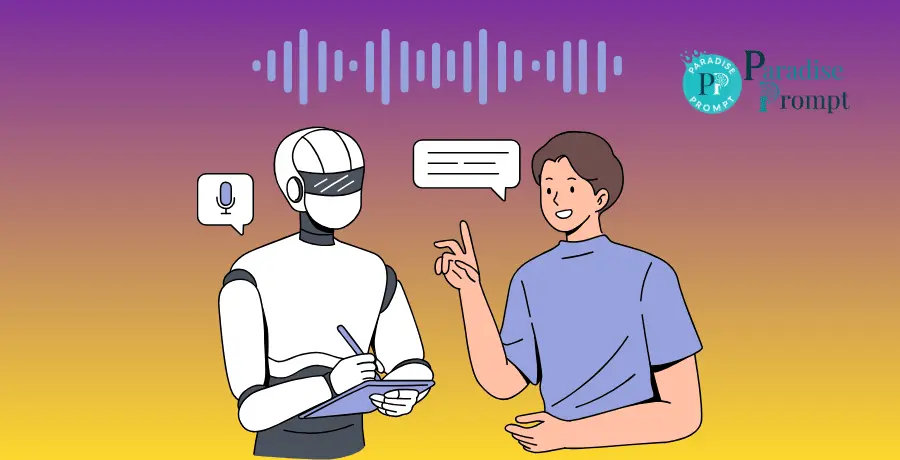
Real-World Case Studies: Successes and Failures in Prompt Engineering
10-1. Industry Examples
Prompt engineering has been applied in various fields, including healthcare, marketing, and creative writing. A US hospital enhanced the accuracy of its triage chatbot by incorporating information about symptoms and the patient’s medical history. A major online store utilized SEO-optimized writing tailored to each category to increase product page conversions by 22% in marketing. A novelist worked with AI to improve their productivity and get more positive feedback from readers in creative writing.
10-2. Lessons Learned
What do all successful tales have in common? Clear prompts, repeated testing, and awareness of AI’s limitations. What can go wrong with a prompt that is meant to help? Too many requests at once, unclear goals, or hazardous parameters.
10-3. Practical Takeaways
– Begin with something simple and then change it often.
– Make complicated requests into a series of prompts.
– Look at the output: Does it fit the audience and the goal?
– Keep a library of personal prompts that you can use again and again.
– Look at mistakes; AI mistakes are great chances to learn.
The real secret? Consider quick engineering as both a science and an art that is constantly evolving.
Prompt Writing Tools and Resources: A Practical Guide
11-1. Free and Paid Tools
– PromptBase: Marketplace for ready-to-use, high-performing AI prompts
– AIPRM: Browser extension adding prompt templates to ChatGPT
– OpenAI Playground & Gemini Studio: Test different prompt structures with instant feedback
– Midjourney, DALL·E, Stable Diffusion UIs: For testing art and image prompts
– SEO tools: SEMrush, Moz, Ahrefs for refining article prompt writing.
11-2. Communities and Courses
– OpenAI Discord & Reddit Prompt Engineering Community: Lively forums for sharing tips, hacks, and inspiration.
– Prompt Engineering with Google DeepMind: Free online primers from leading AI researchers.
– Coursera “Prompt Engineering for Chatbots” (University of Washington): Industry-led curriculum, practical exercises.
11-3. Ethics and Responsible Use
Prompt engineering affects not just outputs but also behaviors. As AI becomes more prevalent, issues such as bias, safety, and transparency become increasingly critical. Now, major organizations suggest that sensitive prompts go through an explicit ethical evaluation (Floridi & Chiriatti, 2020).
The Future of Prompt Writing: Trends and Predictions
12-1. Emerging Technologies
Multimodal AI and real-time prompt adaptation are changing the rules right now. Expect more creative interfaces that figure out what you want, provide quick suggestions, and even verify outputs for safety and accuracy before you see them.
12-2. Impact on Creative Industries
Prompt writing is becoming as important as reading and writing for everything from advertising to journalism to the arts. These skills, which were once only needed in specific jobs, will now be required for all of them. What makes the difference between people who are good at writing prompts and those who dabble? A competitive edge, creative satisfaction, and new job opportunities.
12-3. Lifelong Skills for a Changing World
As AI improves its capabilities, writing prompts will become increasingly valuable. The best creators, thinkers, and problem-solvers of the future will be those who, like masterful prompts, can combine clarity, creativity, and control to turn machines into collaborators rather than just tools.
If you know how to ask the right question, you can open up a world of possibilities.
Summary and Action Plan
13-1. Key Takeaways
Let’s take a step back. We’ve examined the various aspects of crafting effective AI prompts, reviewed the details of prompt writing, discussed strategies for creating text, photo, and SEO content, and considered what the future holds. What do they all have in common? Writing prompts are a valuable skill that you can improve not only by learning facts, but also by trying new things, analyzing what you’ve done, and being brave.
13-2. Your Next Steps
– Practice: Write down different tasks and ways to do them in a daily prompt journal.
– Iterate: Make small changes to the outputs of different models and compare them.
– Join: Get involved in communities, take a class, or share your prompt templates online.
– Think: Look for patterns in your best and worst work.
– Share: Teach someone else (you learn twice).
13-3. Call to Action
Are you ready to move up? Don’t let the AI revolution happen to you; be the one in charge. When you write good prompts, you don’t just get better AI outputs; you also open up new ways to be creative, productive, and open to new ideas. Let your curiosity guide you, ensure your instructions are clear, and discover many new things. What will AI make next? It is in the form of your following best prompt. Please write it down.
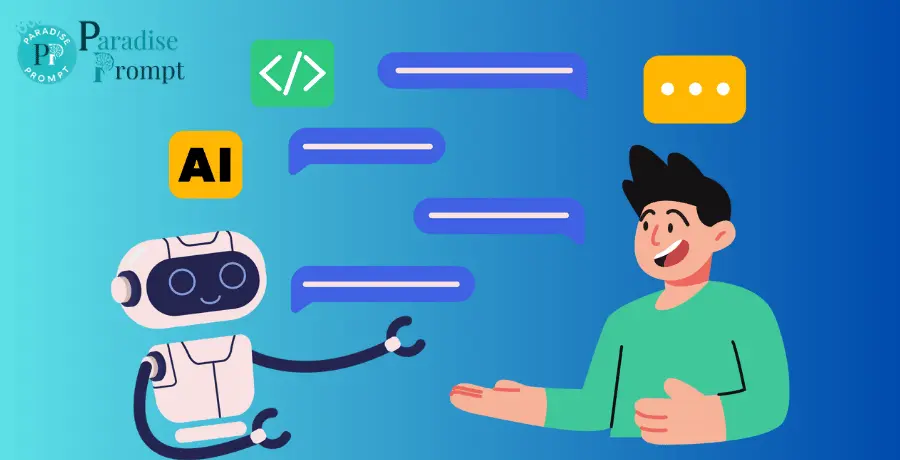
FAQs
- How do you write an ideal prompt for AI?
A perfect prompt is clear, explicit, and planned out. It should convey what you want, provide some background information, list any limitations (such as format, audience, or duration), and then review the results to determine if any changes are needed. The AI’s reaction will be more accurate if your prompt is more in line with what you want it to do.
- What are the four pieces that make up an AI prompt?
The four main parts are: 1) Instruction (what you want done), 2) Context (background or reference points), 3) Input Data (any content to process), and 4) Format/Constraints (output style, length, tone, or requirements).
- How to make AI prompts sound real?
Be clear with your words, include information that is important to your goal, say who you are writing for or what the context is, and impose limits on tone or format. Test the outputs and adjust your query until the AI’s responses sound realistic and natural.
- What makes a good OpenAI prompt?
Be clear about what you want, provide the proper context, and set any limits on the output (such as tone, length, or structure). Then, review the findings to improve your method. Typing, testing, and modifying things often lead to the best outcomes.
- What does it mean to write a prompt?
A prompt for writing is anything that gives you a hint—whether it’s a word, a picture, or a situation—that helps you write something. In AI, prompts are made to get specific, helpful, or innovative answers that are just right for you.
